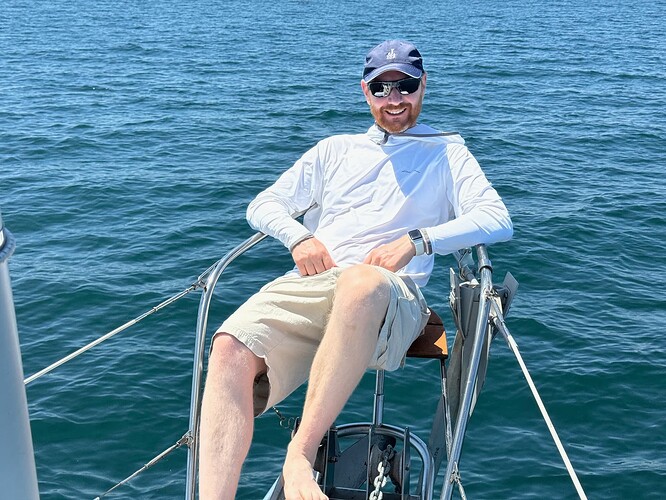I’m not sure what would be the most helpful for the most folks: splitting the topic vs. simply renaming it. It sounds like what would help David / Carol Ann most is to keep going under the heading of “getting back into sailing and set up with a new boat.”
There are some definite advantages to being a Federally documented vessel, although the joy of the process of getting documented definitely isn’t one of those advantages.
Over and above the cross-border and respect issues that Brian G. mentions, I was told when I did it that banks really like large value boats to be documented rather than state-registered. The reason is that their legal rights to claim the vessel as collateral are stronger under U.S. law than state laws. This raises their comfort level about the risk they’re taking in case of a loan default.
That may not feel like an advantage. My first reaction at the time was, “why I would I want it to be easier for them to get their grubby hands on my boat?” But, if you need a loan, it makes it easier to get one. If you paid cash, that may seem irrelevent. But, all of us will someday be selling our boats (or our kids or executors will). Your future buyer may or may not have cash. Being documented increases your pool of eligible buyers.
I don’t know how much things have changed in the 12 years since I sold my documented vessel, but – at least back then – for the 13 years I had it, renewing the documentation was dirt easy.
If I was going to build a forward-facing bow seat, Brian C., my off-the-top of my head approach would be to design it as a plank located further back closer to the aft end of the bow pulpit. That would give someone facing either direction a place to rest their feet. I’d set it up so that one side attached to the lower bar with a hinge, the other side with clips. That way, it could be swung up out of the way when you needed to work with the anchor line or step out onto the bow pulpit platform. I still have to think about how I’d secure it in the raised position, but that feels like a manageable problem.
David, going back to a point Brian C. raised, do you have any plans for re-locating your home or your boat? There are helpful INA members in Annapolis, Virginia and North Carolina who I can connect you with if you want local advice. If you want company from someone who knows the boats, the people I’m thinking of are often happy to give folks sailing time on their boat or go out with you on yours. If that’s useful, let me know what locations are of interest, and I’ll do the introductions.
– Bob
![]()



